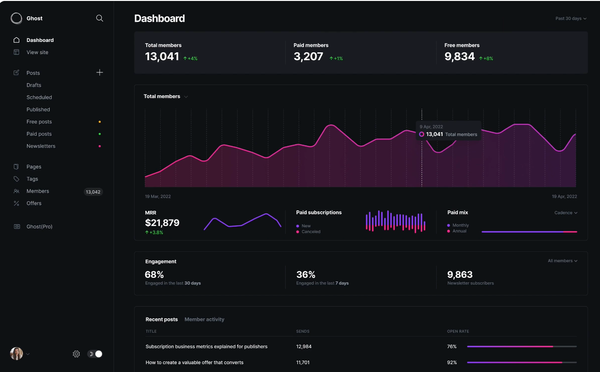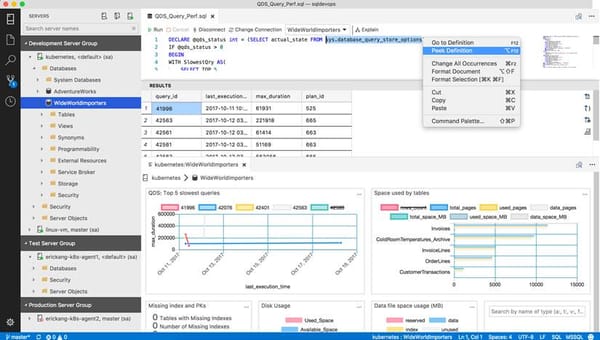What You Need to Know to Convert XML to MySQL
Table of Content
Data export and import are undoubtedly the essentials of database management. Whether it's for regular backups, restoring data in case of emergencies, smooth database migration to new environments, or specific cases like transferring data from a CRM system to a MySQL database, the ability to efficiently convert XML to MySQL plays a crucial role in ensuring seamless and organized data handling.
Understanding XML and MySQL
While they may seem similar, the truth is XML and MySQL are two different concepts that may, indeed, share some similarities.
XML Overview
XML is a tool for data storage and transportation. It’s universal, meaning it doesn’t depend on particular software or hardware. It’s a markup language, so it’s quite similar to HTML as well. It may seem unusual, but XML doesn’t do anything. It only stores data defined in such documents.
Many XML documents work whether or not data has been altered or removed, so it’s both flexible and extensible.
Web services represent the main reason why XML is so popular, but it’s also worth noting document storage, document management, configuration files, RSS feeds or data serialization.
MySQL Overview
MySQL represents an open source system that allows users to manage, store, edit or retrieve data in an efficient manner. It’s used for all kinds of applications, whether small projects or large scale websites. It’s also used for business purposes.
MySQL is popular because it’s secure, easy to use and efficient, but also because of its performance.
Preparing for Conversion
Converting XML to MySQL may seem daunting at first, but there are only a few steps to go through.
Analyzing XML structure
An XML document has two different sections. The prolog contains the XML, as well as the document type declaration. As for document elements, they represent the building components of XML. They come in different sections and divide the document in a hierarchical manner. Each section has a particular utility.
In theory, you don’t necessarily have to double check the XML document for most other operations, but it’s actually needed for a perfect conversion to MySQL, only to ensure data is converted in the exact same manner.
Designing the MySQL Database Schema
There are more schema versions between different styles. Objects are indexed differently, so make sure you use the latest version. Once you define the model, you’ll have to work on table tags. Each column comes with its own field definition tag before moving on to attributes for every field.
Don't forget about field aliases, which are useful during conversion to maintain compatibility.
Conversion Methods
There are quite a few different ways to convert XML into MySQL.
Manual Conversion Techniques
Given the hierarchical profile of XML, data should be flattened first. Each XML element with data should go into a row, while attributes normally go in columns.
No matter what data it is, you’ll need rows and columns based on the attributes.
The conversion implies turning the flattened XML into SQL INSERT statements. Only then you can import them to the new MySQL database.
It's very important to know that XML is case sensitive, so the scripts you use should stick to the original data. Otherwise, you'll face errors.
The idea is fairly simple. Design the schema, identify all the tables, fields and other elements and write the script to import it.
Obviously, in today’s age of technology, there are more automated ways to do it. Not only will they save you time, but they’re also more likely to prevent errors and mistakes.
The xml.etree.ElementTree module on Python is a good choice because it can implement a professional API for parsing and extracting XML data.
You can also find third party software easing the transition, but it’s still worth double checking the final result for your peace of mind.
SQLizer, for example, is a good option for conversions of XML, XLS or JSON files into MySQL. FileToDB also allows importing XML data into MySQL in an effective manner, not to mention dbForge Studio, which brings in a bunch of features that streamline the conversion process.
Automated Tools
Automated tools such as this one https://sonra.io/xml-converter/ are gaining more and more popularity lately and for some good reasons. Most importantly, an automated process will prevent a series of small mistakes and errors, which could be difficult to identify later on.
Automation capabilities are only a matter of a few commands or clicks. Such quick results will save you a tremendous amount of time. Even if the actual conversion takes minutes or more based on the size of the file, you’ll still save time for not having to do it manually.
Most of these automated tools have a low learning curve, so no experience is required whatsoever. As long as you have a few clues about what you’re doing, you’ll normally be able to get the program to start converting within minutes only.
The interface is usually clean and intuitive, so conversions are straightforward.
At the end of the day, there are more options out there, but all of them feature the same major benefit, saving you time and preventing errors, which could take even more time to identify later on. It’s important to know that each tool comes with its own unique specs, features and capabilities.
Also Read How to install MySQL on macOS











